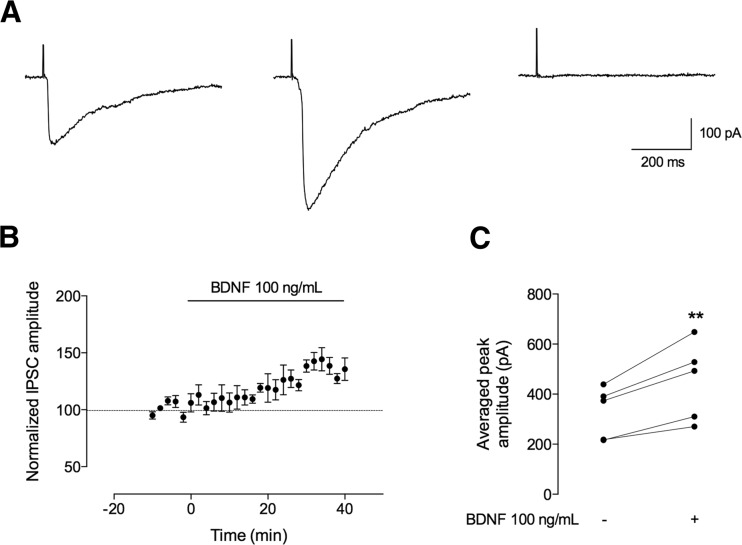Fig. 1.
BDNF increases the amplitude of evoked IPSCs recorded from CA1 pyramidal neurons. The recordings represented here were performed in CA1 pyramidal cells in whole-cell configuration, and inhibitory postsynaptic currents (IPSCs) were evoked by afferent stimulation in the continuous presence of a glutamate receptor antagonist (kynurenic acid, Kyn, 1 mM). a Representative IPSC recordings in the absence (left panel) and presence (middle panel) of BDNF (100 ng/mL) and in the presence of bicuculline (20 μM) (right panel). b Time course changes, induced by BDNF (100 ng/mL, n = 5), in the peak amplitude of the evoked IPSCs. One hundred percent represents the average peak amplitude of the currents recorded for 10 min prior to BDNF application. BDNF effect was quantified by comparing the peak amplitude from the 10-min period before BDNF application (baseline) to the 30–40 min after BDNF application. c The individual (dots) changes in peak amplitude are shown as individual data obtained in the 10 min in the absence (−) of BDNF and 30–40 min after (+) BDNF administration (n = 5). Values are mean ± SEM. **p < 0.01 (two-tailed paired Student’s t test)

